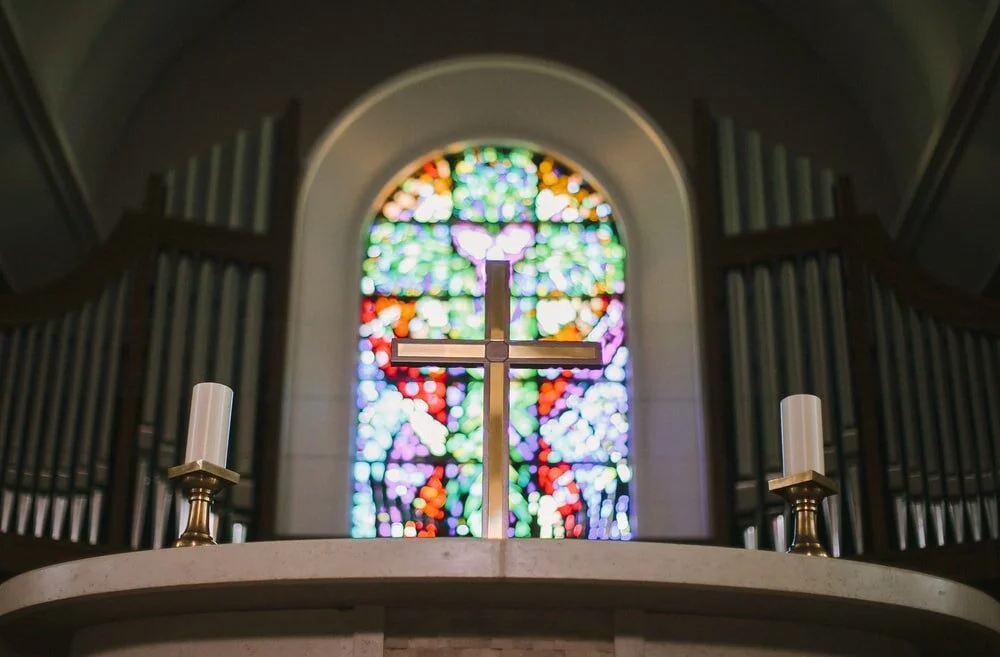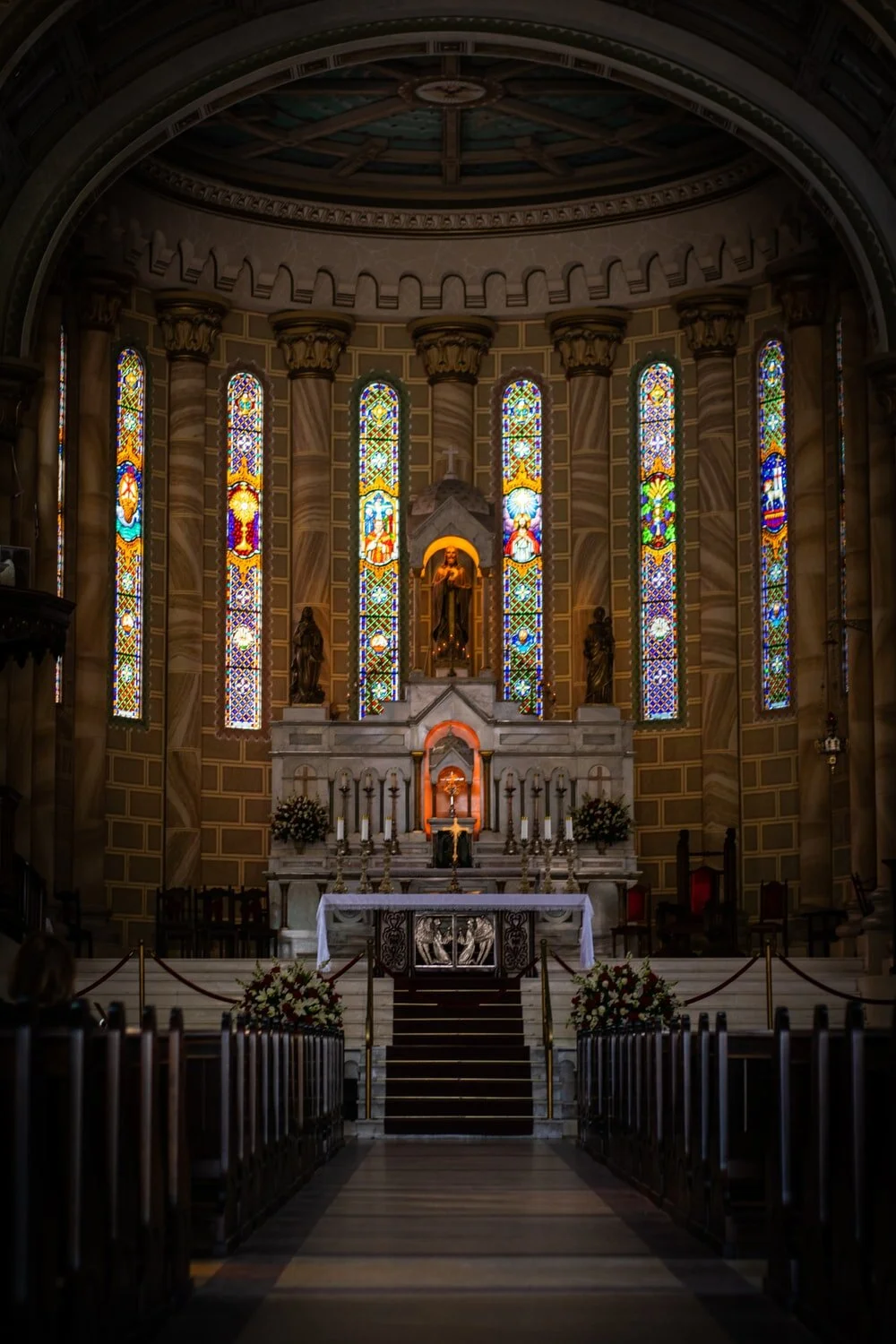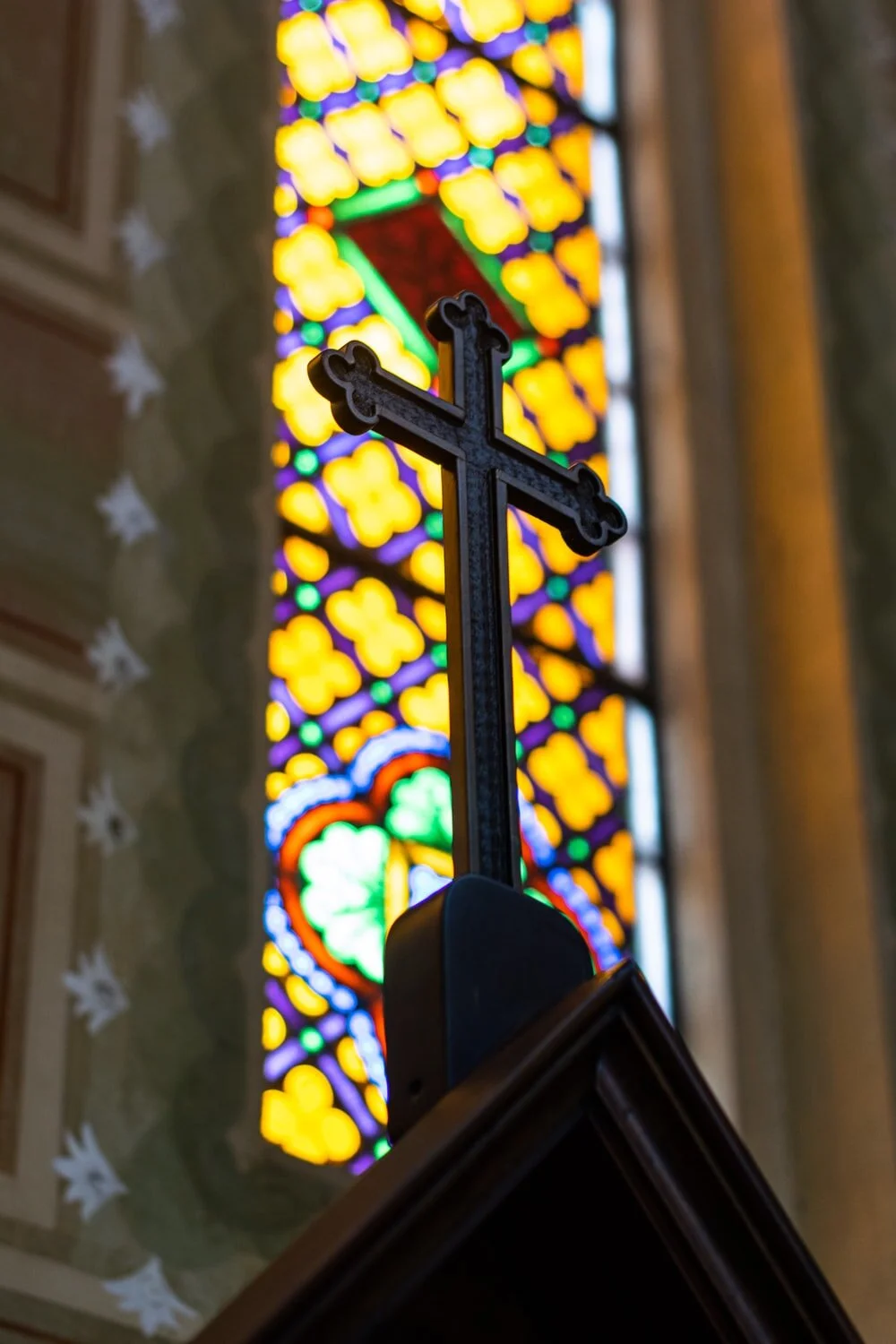Holy Thursday 2020 – The Celebration of the Eucharist and Priesthood
I prize my chalice - the cup with which I celebrate Mass. It’s wood. And it’s broken.
I love my paten – the plate on which we place the bread to be consecrated, the bread which has been consecrated at Mass.
It’s wood. And it’s broken.
And I would not have them any other way.
Preparing for my ordination, I knew I wanted a cup of native Florida wood. It was spun from a big, old block of lignum vitae – one of the world’s hardest woods and abundant more than a century ago in South Florida but now so rare that it is an endangered species. Only weeks after the master craftsman delivered the cup, the wood split. Today an epoxy lining protects the inside so that the wine – the Blood of Christ – does not leak through.
My paten is scared and cracked, splinted on the edge. Like so many of the People of God.
Please don’t ask me to explain Transubstantiation – the whole theological tangle of how the bread and wine mysteriously become the Body and Blood of Christ. I can’t.
My often irreverent brother Michael tells the tale of a friend who, as a child in the “good ole days” when the Mass was in Latin and the priest kept his back to the people, believed the “mystery” of transubstantiation was that at the consecration the priest held up a big host and then, at communion time, when he turned around the big host had become so many little ones.
I can’t explain transubstantiation. But I believe. I believe because I have seen the miracle. I believe because, at times, I have known how important this unique encounter with the Christ changes not the bread and wine but us – the People of God.
One of my father’s first requests of me as a young priest was to “bring communion to Judge O’Donnell.” Francis, the judge, and my father were initiated into the Knights of Columbus on the day Michael was born. Thirty-plus years later, he was incapacitated by strokes, traumatic brain injuries and age. For years, after Masses at the parish and the federal prison, I would end my Sundays by bringing Communion to “the judge.”
In the beginning, we battled. He was a traditional, old-style Irish Catholic. That meant “Communion on the tongue.” I believed “If you hold hands with your wife, if you hold your children and grandchildren in your hands, surely you can hold the Son of God in your hands. Which is better - to place the Body Christ on a gold-plated piece of tin or in the hands of a baptized Christian?” And he accepted my argument until his disabilities made it impossible. But whether it was Communion on the tongue or in the palm, when Francis consumed the consecrated host he was transformed. His face became beatific – changed and peace-filled. There was no way to describe it. There’s still no way to explain his transformation.
After Francis and Alice moved to a condo in Palm Beach, I’d stop for a visit and communion call when driving north or south on I-95. At the time of my last visit, Francis was in something akin to a vegetative state. He had no discernible cognitive functioning. Nonetheless, as I prepared to leave, Alice insisted, “Ask Francis if he would like to receive communion.”
Afraid he might choke, I asked, “Judge. I have communion with me. Would you like to receive communion?”
The judge, who hadn’t spoken, who had not interacted with anyone in years, turned his face to me, extended his tongue and when the smallest particle of the host had been placed there, closed his eyes and was transformed. I know it sounds crazy, but I walked to my car convinced Francis had experienced the Beatific Vision – he was in Communion with God.
In July 2012, Dr. Sheila Cassidy published her “Confessions of a Lapsed Catholic.” Good for her. She’s a survivor and, (pardon the expression) probably needs a break from God and religion.
The reader will have gathered, from the title of this book, that I am no longer a practicing Catholic: that I am what is known in the Church as a ‘lapsed’ Catholic. For those unfamiliar with Roman Catholic jargon I should explain that being ‘lapsed’, for me, means that I no longer attend Mass, and I no longer avail myself of the sacraments, those ‘outward signs of inward grace’ which sustained me in my earlier years. To my priest friends (of whom I have many) I explain that this is a sort of sabbatical and that maybe I shall return, on my deathbed or before, pulled back to Holy Mother Church by what G.K. Chesterton called a ‘twitch upon the thread’, that invisible cord by which Catholics are tied to the Church.
At one point, she briefly entered the convent with the intention of becoming a religious. Eventually, she served for fifteen years as the medical director of St. Luke’s Hospice in Plymouth (England) and then continued to specialize in palliative care and write on spiritual topics.
Before all that, however, Dr. Cassidy completed her medical studies at Oxford University in 1963 and, ultimately, began practicing medicine in Chile during the government of President Salvador Allende.
Dr. Cassidy had lived in Chile for four years and had never been involved in politics, but, after the September 1973 military coup, she worked as a physician for the Committee for Peace, operated under the leadership of Santiago’s Archbishop Raul Cardinal Silva Enriquez. On October 18, almost five weeks after the coup, a priest-friend asked her to treat Nelson Gutierrez, who had three bullet holes in his leg and could not go to a hospital because he was a political fugitive; she did but was unable to provide all of the services he needed. Nonetheless, Gutierrez’s condition continued to deteriorate, forcing him to take refuge in the Papal Nunciatura (the Vatican Embassy in Santiago). She was arrested on November 1 – the Feast of All Saints - in the residence of Irish, Australian and American Columban Fathers, who were personal friends and in whose home she had been a frequent visitor.
On January 19, 1976, Dr. Cassidy gave evidence before the United Nations Ad Hoc Working Group of the Commission on Human Rights in Geneva. She described her arrest, how she was detained for four days in a “house of interrogation” where she was abused and humiliated by police officials, threatened with rape and on three occasions tortured by the administration of electric shocks.
Dr. Cassidy was ultimately transferred to a number of different detention centers, where she was repeatedly interrogated, eventually had several hearings before governmental tribunals and, finally, was expelled from Chile in late December. She had been held prisoner for almost nine weeks.
Today, Holy Thursday 2020, we will not dwell on Dr. Cassidy’s accounts of her torture. That is for another time. Today, Holy Thursday, we remember Christ’s gift of Himself to us – “This is my body… This is my blood.”
Sometime after her arrest and when evidence of her torture was no longer visible, Dr. Cassidy received a visit from American Maryknoll Sisters Carla Piette and Ita Ford, who brought a number of carefully chosen gifts they unwrapped one by one: chocolate, poetry books, a breviary, colored pencils, sewing materials – all inspected by guards – and, carefully concealed in the folds of a handkerchief, a number of consecrated hosts. Many months later, Carla explained to me that, while Dr, Cassidy knew that the suffering, crucified Jesus was present with her in her incarceration, she wanted the living Jesus of the Eucharist – communion – to be present with her in her prison.
Today Dr. Cassidy is a self-described “lapsed Catholic.”
That’s okay.
I have a sense that the Eternal God, the God of Mercy and Tenderness, the Lord of the Eucharist, the Jesus of the Cross and the Resurrection quietly whispers toward her “That’s OK, Sheila. I understand. You’ve been beaten and broken; you’ve spent a lifetime caring for the beaten and broken. You need a break. I am with you always. I will be here for you when you are ready.
“Well done, good and faithful servant.” (Matthew 25:23)




